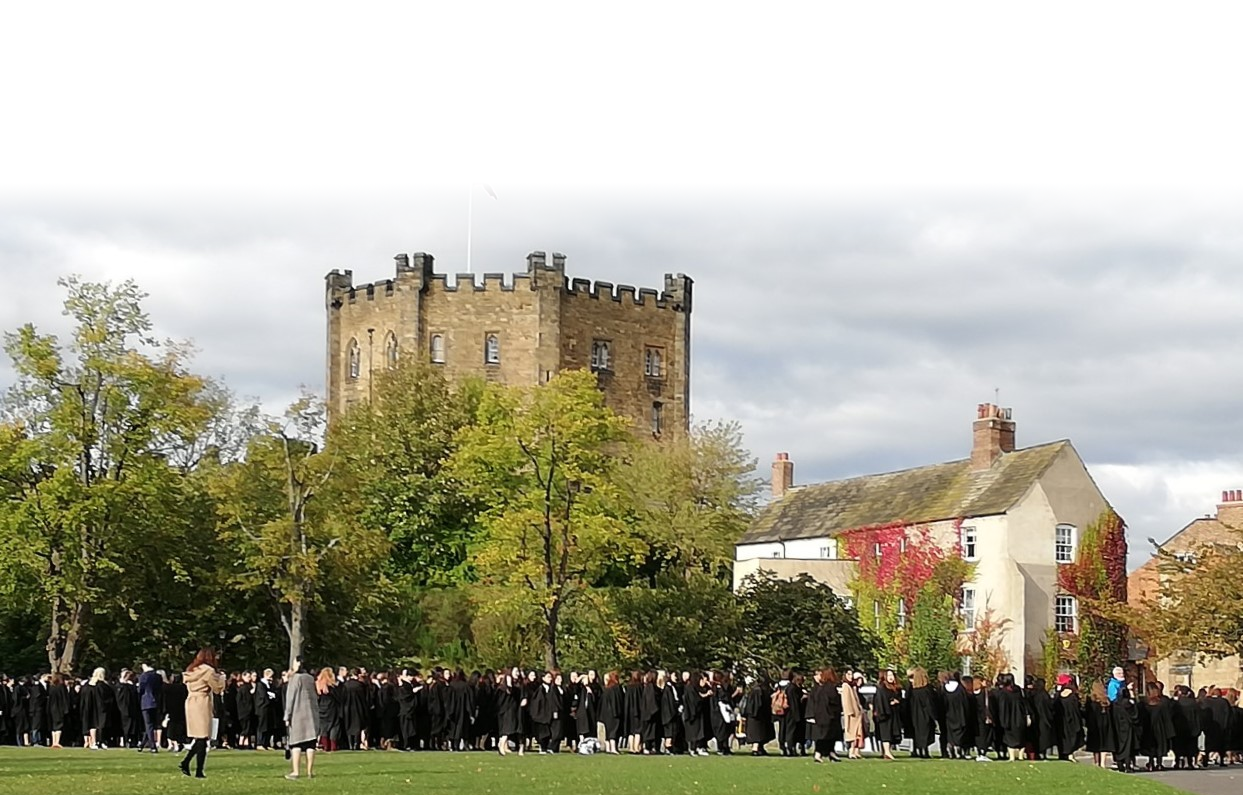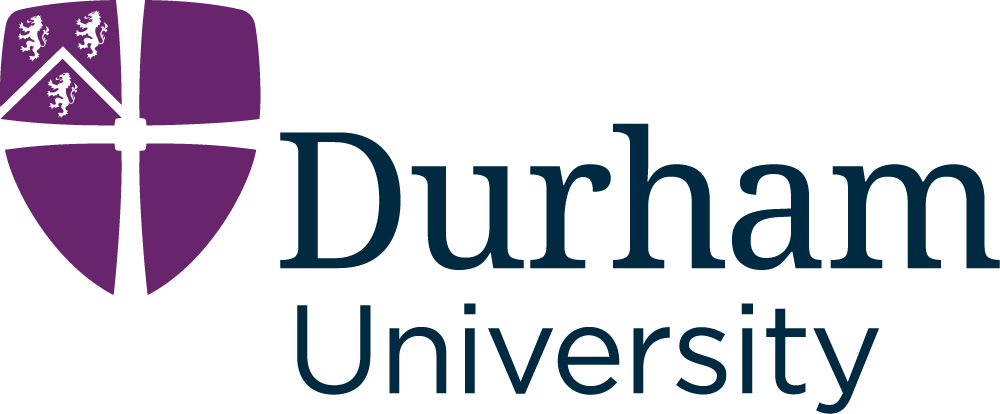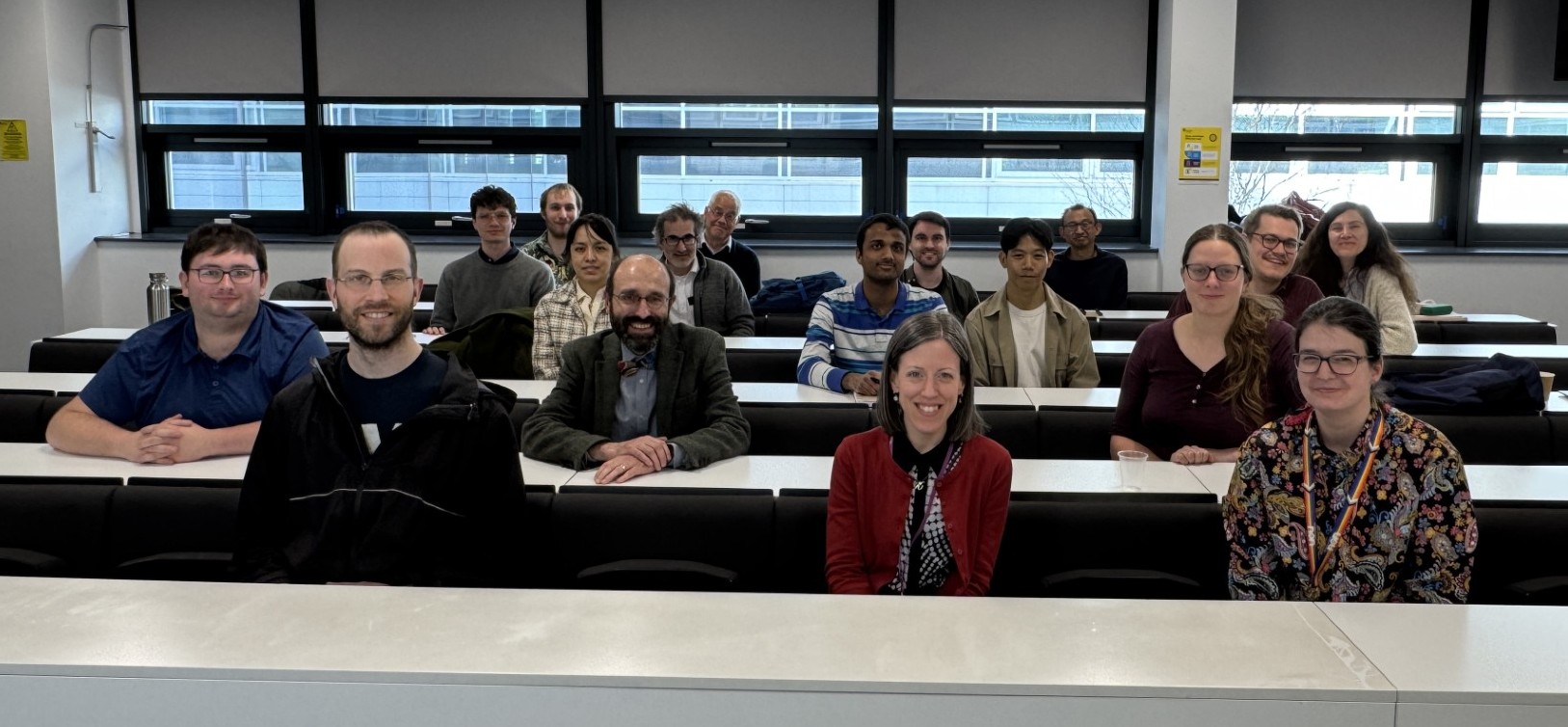

Spectral Theory Workshop - Durham
14-15 April 2025


Spectral Theory Workshop - Durham
14-15 April 2025
As part of the activities of the UK Spectral Theory Network, we are organising a workshop on Spectral Theory that will take place on 14th - 15th April 2025 at Durham University. The official registration deadline was on 31 January 2025. Late registration may still be possible, please email the organisers (see below).
Participants are required to take care of their own travel and accommodation arrangements.

We will hold the meeting in the seminar room MCS2068 in the Department of Mathematical Sciences. You find the building on the map here. In the mornings and evenings, Bus 41 runs between the train station via the city centre to the University Science Park (this last stop is near the Department of Mathematical Sciences), you can find a timetable with live map here. The seminar room MCS2068 is on the second floor - when you come up the stairs, it is the first room on the left hand side.
09:30 - 10:00: Arrival
10:00 - 11:00: Talk by Michiel van den Berg - On the torsion function for simply connected, open sets in the plane.
11:15 - 11:45: Talk by Tirumala Chakradhar - Magnetic Steklov eigenvalues.
11:45 - 13:00: Lunch break
13:00 - 14:00: Talk by Veronique Fischer - High frequency analysis for subelliptic operators.
14:15 - 14:45: Talk by Amaranta Membrillo Solis - Spectral rigidity of orbifolds.
14:45 - 15:15: Coffee break
15:15 - 16:15: Talk by Marco Marletta - Essential spectra of Maxwell systems and some remarks on analytic pencils.
10:00 - 11:00: Talk by Lyonell Boulton - Linear completeness of trajectories of eigenfunctions.
11:15 - 11:45: Talk by Peter Hearnshaw - Eigenvalue Decay Estimates for the Two-Particle Density Matrix for Coulombic Systems.
11:45 - 12:15: Talk by Philippe Charron - Fourier expansion of products of eigenfunctions on analytic manifolds.
12:15 - 13:30: Lunch break and end of workshop
Title: On the torsion function for simply connected, open sets in the plane.
Abstract: Bounds are obtained for the torsion function in simply connected open sets in the plane, in terms of the bottom of the spectrum of the corresponding Dirichlet Laplacian. Joint work with Dorin Bucur.
Title: Linear completeness of trajectories of eigenfunctions.
Abstract: In this talk we will examine the linear completeness of trajectories of
eigenfunctions associated to non-linear eigenvalue problems on a segment.
We pursue two specific goals. On the one hand, we establish that linear
completeness persists for non-linear Schrödinger equations, even when the
trajectories lie far from those of the linear equation where bifurcations
occur. On the other hand, we show that this is also the case for a fully
non-linear version of this equation which is naturally associated with
Appell hypergeometric functions. Both models shed new light on a framework
for completeness in the non-linear setting, considered by L.E. Fraenkel
over 40 years ago, that may have significant potential but which does not
seem to have received much attention.
The talk is based on the manuscript: "Completeness of trajectories
associated to Appell hypergeometric functions." Journal of Mathematical
Analysis and Applications. (2024) 531, 1, 127812.
Title: Magnetic Steklov eigenvalues.
Abstract: We present various results concerning the spectrum associated with the magnetic Steklov problem on compact Riemannian manifolds with boundary for generic magnetic potentials. In particular, we discuss equivalent characterisations of magnetic Steklov operators which are unitarily equivalent to the classical Steklov operator, bounds for the smallest eigenvalue, and comparison of the magnetic Steklov operator with the square root of the magnetic Laplacian on the boundary. This is based on joint work with Katie Gittins, Georges Habib and Norbert Peyerimhoff.
Title: Fourier expansion of products of eigenfunctions on analytic manifolds.
Abstract: In this talk, I will describe the fourier expansion (in terms of Laplace eigenfunctions) of products of three or more eigenfunctions on a closed manifold. I will describe a recent result (with François Pagano) which states that if the metric is analytic, then one only needs a small number of eigenfunction to accurately represent these products with exponential accuracy.
Title: High frequency analysis for subelliptic operators.
Abstract: The aim of the talk is to present recent developments of high frequency analysis for sub-elliptic operators and in sub-Riemannian geometry. I will start with discussing why these questions are closely related to many aspects of harmonic and functional analysis.
Title: Eigenvalue Decay Estimates for the Two-Particle Density Matrix for Coulombic Systems.
Abstract: We consider bound states of the quantum system of an atom or molecule. The eigenvalue decay of the reduced density matrices can tell us about how well N-particle wavefunctions can be approximated using products of functions of fewer particles, for example Slater determinants. Certain questions have been answered for the one-particle density matrix, but the eigenvalue decay in the two-particle case brings new challenges. Indeed, the decay rate given by the Besov space regularity of the kernel is not optimal. I will talk about a method to improve upon this decay rate, and describe how such questions bring together the theory on singular values of integral operators and regularity of Coulombic wavefunctions.
Title: Essential spectra of Maxwell systems and some remarks on analytic pencils.
Abstract: We consider how to calculate the essential spectra of time-harmonic
dissipative Maxwell systems and Drude-Lorentz pencils. We show how additional
unexpected essential spectrum arises at discontinuity interfaces between conductive
and non-conductive regions, somewhat related to `black hole modes’ and plasmons
observed for second order elliptic equations with sign-changing leading coefficients
by several authors. I shall make a case for a particular definition of the \(\sigma_{e,5}\)
essential spectrum when the problems depend on the spectral parameter in a rather
general way. (Hint: it is not the pointwise definition that is natural for the other \(\sigma_{ek}\).)
If time permits I shall also discuss a model of a Faraday layer, for which these ideas
turn out to be indispensable.
This talk is based on a series of five papers I have written over the last 6 years with
Giovanni Alberti (Genova), Sabine Boegli (Durham), Malcolm Brown (deceased),
Francesco Ferraresso (Sassari) and Christiane Tretter (Bern).
Title: Spectral rigidity of orbifolds.
Abstract: Orbifolds extend the concept of manifolds by permitting well-defined singularities, which play a crucial role in their geometric and topological properties. A central problem in spectral geometry is spectral rigidity, which addresses whether the spectrum of a differential operator, such as the Laplacian, uniquely determines the underlying geometric or topological structure of a space. This raises two fundamental questions: (1) Can spectral data differentiate between orbifolds with singularities and smooth manifolds? (2) What geometric and topological features of the singular set can be deduced from spectral information?
Using heat invariants of the spectra of the Hodge-Laplace operator, we investigate these questions for individual p-spectrum, examining how spectral data encode singular structures. For example, we establish conditions on the codimension of the singular set that guarantee its volume is spectrally determined. These results contribute to understanding the extent to which spectral rigidity holds in the setting of orbifolds. This talk is based on joint work with Katie Gittins, Carolyn Gordon, Juan Pablo Rossetti, Mary Sandoval, and Elizabeth Stanhope.
Sabine Boegli (sabine.boegli (at) durham.ac.uk) and Katie Gittins (katie.gittins (at) durham.ac.uk)
The activities of the UK Spectral Theory Network are funded by the Isaac Newton Institute for Mathematical Sciences, EPSRC (Grant Ref. EP/V521929/1), the Heilbronn Institute for Mathematical Research, and the London Mathematical Society.



